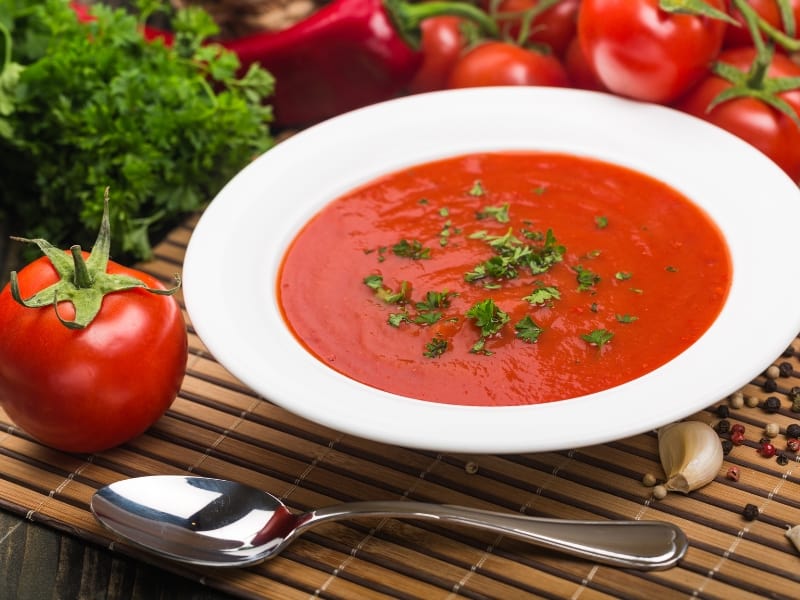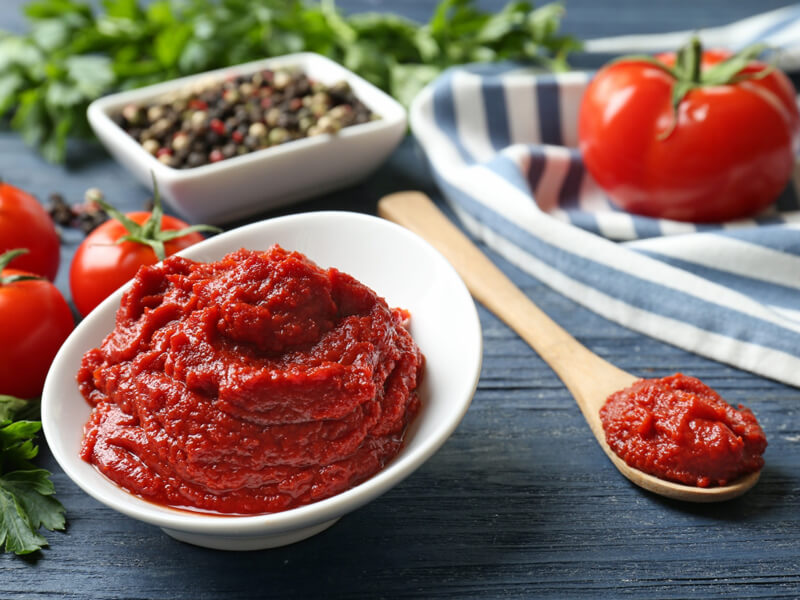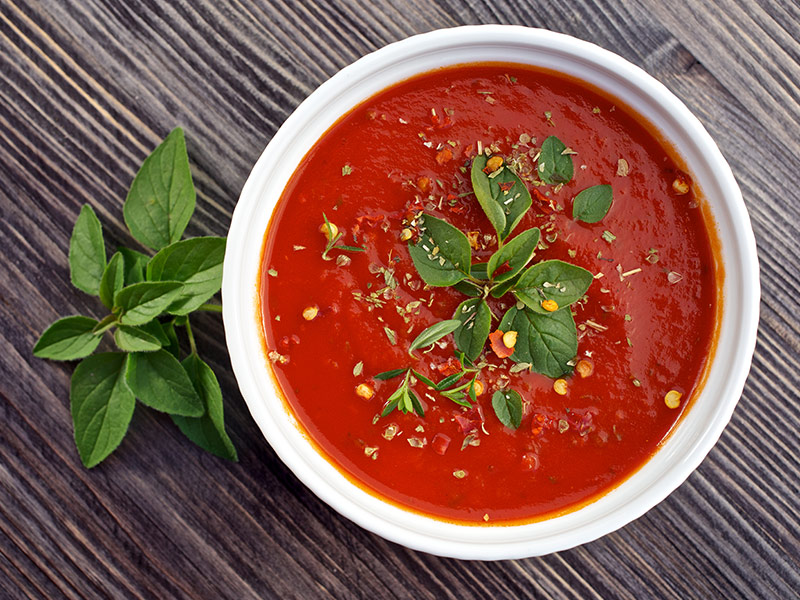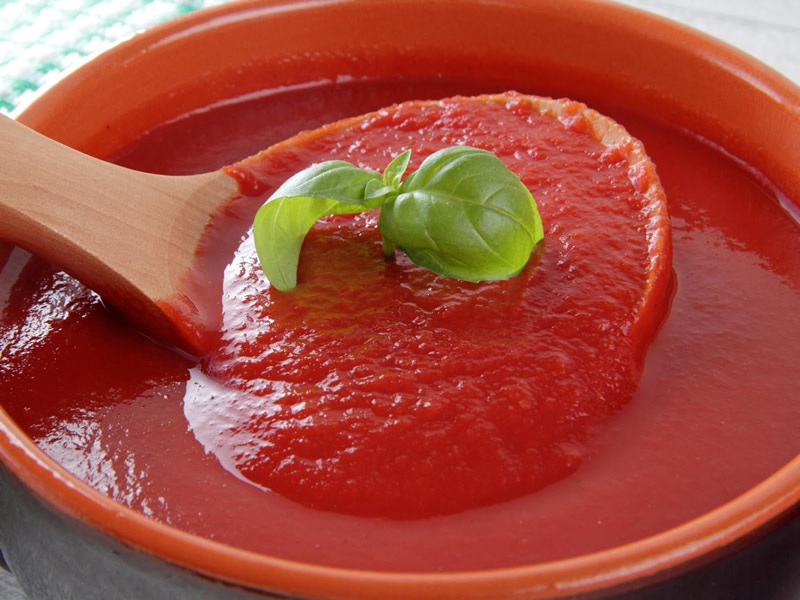Understanding the Differences and Uses
Introduction:
Tomatoes are a versatile fruit that is commonly used in various culinary dishes, offering a rich flavor and vibrant color to many recipes. Two popular tomato-based products often used in cooking are tomato paste and tomato sauce. While they may seem similar, there are distinct differences between the two in terms of taste, texture, and culinary applications. In this article, we will delve into the characteristics and uses of tomato paste and tomato sauce, helping you better understand when and how to incorporate them into your cooking.
1. Tomato Paste:
Tomato paste is a concentrated form of tomato that has been cooked down to remove most of its moisture. It is made by cooking ripe tomatoes for several hours until they break down into a thick, deep red paste. The paste is then strained to remove any seeds or skin, resulting in a smooth and concentrated tomato flavor.
Characteristics of Tomato Paste:
– Thick consistency: Tomato paste has a dense and concentrated texture, containing very little moisture.
– Intense flavor: Due to the cooking process, tomato paste has a strong and robust tomato taste, which can be slightly bitter.
– Dark color: It has a deep red color, often bordering on burgundy or maroon.
Uses of Tomato Paste:
Given its concentrated nature, tomato paste is typically used as a flavor enhancer rather than a standalone ingredient. Its rich, deep flavor makes it an excellent base for soups, stews, and sauces. Some popular uses for tomato paste include:
1. Sauces and gravies: Tomato paste is commonly used as a base for pasta sauces, barbecue sauces, and gravies. Its concentrated flavor adds depth and richness to these preparations.
2. Soups and stews: Tomato paste can be added to soups and stews to enhance the tomato flavor and thicken the consistency.
3. Marinades and rubs: It can be incorporated into marinades and rubs for meat or vegetables, providing a bold tomato taste.
4. Pizza and pasta: Tomato paste can be spread over pizza dough or used as a base for pasta dishes, acting as a flavor foundation for these popular dishes.
2. Tomato Sauce:
Tomato sauce, on the other hand, is a more liquid and less concentrated form of tomatoes. It typically has a smoother texture and a milder flavor compared to tomato paste. Tomato sauce is made by cooking ripe tomatoes and blending them to achieve a smooth consistency.
Characteristics of Tomato Sauce:
– Smooth consistency: Tomato sauce has a thinner and more liquid texture compared to tomato paste.
– Mild flavor: Tomato sauce has a milder and less intense taste compared to tomato paste, often described as sweeter and less acidic.
– Lighter color: It generally has a lighter shade of red compared to tomato paste.
Uses of Tomato Sauce:
Tomato sauce is a versatile ingredient that can be used in a wide range of culinary applications. Its milder flavor and smoother consistency make it an ideal component for various dishes. Some common uses of tomato sauce include:
1. Pasta dishes: Tomato sauce is a popular choice for pasta dishes like spaghetti, lasagna, and ravioli. Its smoother texture and milder flavor allow it to coat the pasta evenly.
2. Casseroles: Tomato sauce can be used as a base for casseroles, providing moisture and flavor to baked recipes.
3. Pizza: Tomato sauce is a crucial ingredient in pizza-making, providing the distinctive tomato flavor to the base.
4. Dipping sauces: Tomato sauce can be used as a condiment for snacks and appetizers, such as dipping sauces for fries or chicken nuggets.
3. Tomato Paste vs. Tomato Sauce: When to Use Each?

Understanding the differences between tomato paste and tomato sauce can help you choose the right ingredient for your culinary creations. Here are some scenarios where each product is most suitable:
– When to use tomato paste:
– When you need to add depth and intensity to sauces, gravies, or stews.
– When you want to thicken soups or impart a rich tomato flavor.
– When making marinades or rubs that require a bold tomato taste.
– When to use tomato sauce:
– When you prefer a milder and sweeter tomato flavor in your dishes.
– When preparing pasta recipes that require a smooth and lighter consistency.
– When making pizza or dishes where the tomato flavor remains more subtle.
Conclusion:
Tomato paste and tomato sauce both have their unique characteristics and culinary uses. Understanding the differences between the two can help you make the right choice for your recipes. Tomato paste is a concentrated, thick product with a robust flavor, perfect for adding depth to sauces and gravies, or as a base for soups and stews. Tomato sauce, on the other hand, is a more liquid and less concentrated version, offering a milder taste with a smoother consistency, ideal for pasta dishes, casseroles, and as a condiment. By being aware of their distinctions, you can enhance your culinary creations with the appropriate tomato-based ingredient.Title: Tomato Paste vs. Tomato Sauce: Understanding the Differences and Uses
Introduction:
Tomatoes are a versatile fruit that is commonly used in various culinary dishes, offering a rich flavor and vibrant color to many recipes. Two popular tomato-based products often used in cooking are tomato paste and tomato sauce. While they may seem similar, there are distinct differences between the two in terms of taste, texture, and culinary applications. In this article, we will delve into the characteristics and uses of tomato paste and tomato sauce, helping you better understand when and how to incorporate them into your cooking.
1. Tomato Paste:
Characteristics of Tomato Paste:
Tomato paste is a concentrated form of tomato that has been cooked down to remove most of its moisture. It is made by cooking ripe tomatoes for several hours until they break down into a thick, deep red paste. The paste is then strained to remove any seeds or skin, resulting in a smooth and concentrated tomato flavor.
– Thick consistency: Tomato paste has a dense and concentrated texture, containing very little moisture.
– Intense flavor: Due to the cooking process, tomato paste has a strong and robust tomato taste, which can be slightly bitter.
– Dark color: It has a deep red color, often bordering on burgundy or maroon.
Uses of Tomato Paste:
Given its concentrated nature, tomato paste is typically used as a flavor enhancer rather than a standalone ingredient. Its rich, deep flavor makes it an excellent base for soups, stews, and sauces. Some popular uses for tomato paste include:
– Sauces and gravies: Tomato paste is commonly used as a base for pasta sauces, barbecue sauces, and gravies. Its concentrated flavor adds depth and richness to these preparations.
– Soups and stews: Tomato paste can be added to soups and stews to enhance the tomato flavor and thicken the consistency.
– Marinades and rubs: It can be incorporated into marinades and rubs for meat or vegetables, providing a bold tomato taste.
– Pizza and pasta: Tomato paste can be spread over pizza dough or used as a base for pasta dishes, acting as a flavor foundation for these popular dishes.
2. Tomato Sauce:
Characteristics of Tomato Sauce:
Tomato sauce, on the other hand, is a more liquid and less concentrated form of tomatoes. It typically has a smoother texture and a milder flavor compared to tomato paste. Tomato sauce is made by cooking ripe tomatoes and blending them to achieve a smooth consistency.

– Smooth consistency: Tomato sauce has a thinner and more liquid texture compared to tomato paste.
– Mild flavor: Tomato sauce has a milder and less intense taste compared to tomato paste, often described as sweeter and less acidic.
– Lighter color: It generally has a lighter shade of red compared to tomato paste.
Uses of Tomato Sauce:
Tomato sauce is a versatile ingredient that can be used in a wide range of culinary applications. Its milder flavor and smoother consistency make it an ideal component for various dishes. Some common uses of tomato sauce include:
– Pasta dishes: Tomato sauce is a popular choice for pasta dishes like spaghetti, lasagna, and ravioli. Its smoother texture and milder flavor allow it to coat the pasta evenly.
– Casseroles: Tomato sauce can be used as a base for casseroles, providing moisture and flavor to baked recipes.
– Pizza: Tomato sauce is a crucial ingredient in pizza-making, providing the distinctive tomato flavor to the base.
– Dipping sauces: Tomato sauce can be used as a condiment for snacks and appetizers, such as dipping sauces for fries or chicken nuggets.
3. Tomato Paste vs. Tomato Sauce: When to Use Each?
Understanding the differences between tomato paste and tomato sauce can help you choose the right ingredient for your culinary creations. Here are some scenarios where each product is most suitable:
When to use tomato paste:
– When you need to add depth and intensity to sauces, gravies, or stews.
– When you want to thicken soups or impart a rich tomato flavor.
– When making marinades or rubs that require a bold tomato taste.
When to use tomato sauce:
– When you prefer a milder and sweeter tomato flavor in your dishes.
– When preparing pasta recipes that require a smooth and lighter consistency.
– When making pizza or dishes where the tomato flavor remains more subtle.
4. Tomato Paste and Tomato Sauce in the Food Industry:
The use of tomato paste and tomato sauce extends beyond home cooking. In the food industry, both products play significant roles in various sectors, including restaurants, catering services, and food manufacturing.
Restaurants:
– Many restaurants use tomato paste as a base for their pasta sauces, allowing them to maintain consistent flavor profiles in their recipes.
– Tomato sauce is commonly used as a topping or ingredient in dishes like pizza, lasagna, and various meat dishes.
Catering Services:
– Tomato paste is a crucial ingredient for catering services when preparing large quantities of sauces, soups, and stews. Its concentrated flavor ensures consistent taste throughout.
– Tomato sauce is often used for catering dishes that require a milder tomato flavor, such as pasta dishes and casserole preparations.
Food Manufacturing:

– Tomato paste is a staple in the food manufacturing industry. It is commonly used in canned soups, ready-made pasta sauces, ketchup, and other tomato-based products.
– Tomato sauce is widely utilized in the production of pizzas, frozen meals, and condiments like ketchup and tomato-based dips.
5. Nutritional Profile:
Both tomato paste and tomato sauce offer various nutrients and health benefits, although in slightly different ways.
Tomato Paste:
– Tomato paste contains higher concentrations of vitamins and minerals than tomato sauce due to its reduced water content.
– It is a significant source of vitamin C, vitamin A, potassium, and lycopene, a powerful antioxidant known for its potential health benefits.
– Lycopene in tomato paste is more accessible to the body than fresh tomatoes due to the cooking and processing involved.
Tomato Sauce:
– Tomato sauce retains a good amount of vitamins and minerals, although slightly lower than tomato paste.
– It is a source of vitamins A and C, potassium, and lycopene. However, the levels of lycopene may be slightly lower compared to tomato paste.
– Tomato sauce is still a valuable source of antioxidants, particularly when made from high-quality tomatoes.
6. Storage and Shelf Life:
Proper storage of tomato paste and tomato sauce is essential to maintain their quality and freshness.
Tomato Paste:
– Tomato paste is usually sold in small cans or tubes. Once opened, any unused portion can be transferred to an airtight container and refrigerated.
– Properly stored, tomato paste can last for several weeks to a month in the refrigerator.
– Freezing tomato paste is also an option, allowing you to extend its shelf life for up to three months.
Tomato Sauce:
– Tomato sauce is often sold in bottles or jars. Once opened, it is important to transfer any unused portion to a sealed container and refrigerate.
– Tomato sauce can last for several days to a couple of weeks when stored correctly in the refrigerator.
– If you have a larger quantity or want to extend the shelf life further, freezing tomato sauce is an option. It can be stored in the freezer for up to three months.
7. Variations and Culinary Adaptations:
While tomato paste and tomato sauce are the most commonly used forms of tomato-based products, there are variations available to suit specific culinary needs.
– Tomato puree: Tomato puree is a combination of tomato paste and tomato sauce, offering a balanced consistency and flavor. It is a versatile alternative used in many recipes.
– Tomato juice: Tomato juice is a liquid form of tomatoes, often enjoyed as a beverage or used as an ingredient in cocktails and recipes that require a liquid base.
– Tomato powder: Tomato powder is a dehydrated form of tomatoes, offering a concentrated tomato flavor. It is particularly useful in dry seasoning mixes or for reconstituting into sauces and soups.
Conclusion:

Tomato paste and tomato sauce are distinctive tomato-based products that serve various culinary purposes. Tomato paste’s concentrated flavor and dense consistency make it a perfect ingredient for enhancing soups, stews, sauces, marinades, and rubs. On the other hand, tomato sauce’s smoother texture and milder taste make it an ideal choice for pasta dishes, casseroles, pizza, and dipping sauces. By understanding the characteristics and uses of each, you can make informed decisions when incorporating tomato-based ingredients into your recipes, enhancing the flavor profile of your dishes. Whether you’re a home cook or a professional chef, tomato paste and tomato sauce are valuable components to have in your culinary arsenal.









